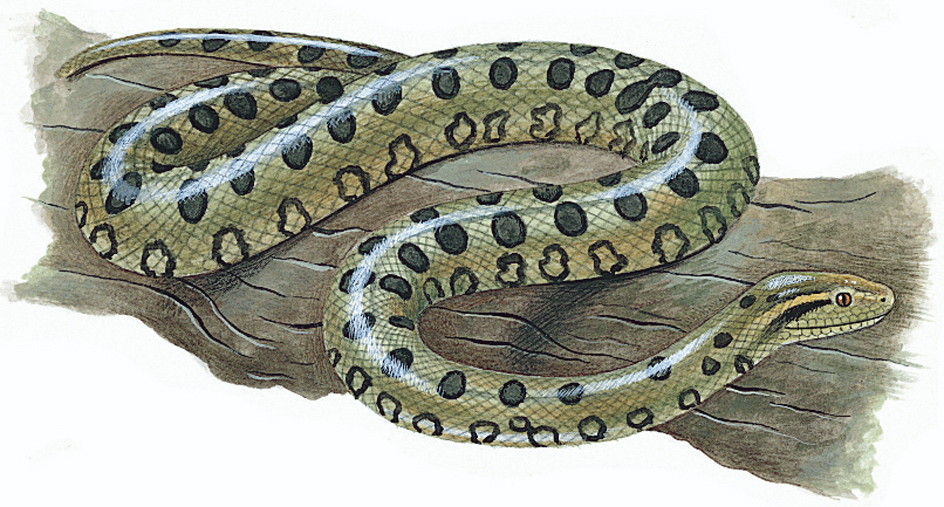Boa is the name of a group of snakes that vary greatly in size. One kind of boa, the green anaconda, can reach about 30 feet (9 meters) in length. Several other kinds of boas, on the other hand, may grow less than 3 feet (90 centimeters) long. Boas inhabit warm, usually tropical areas around the world.

Boas live on the ground, in trees, or occasionally in underground burrows. They eat live animals, such as small mammals and birds. Some kinds have sensory pits on their upper lips that detect heat. Boas use these pits to find prey in the dark. Many of the snakes kill prey by wrapping around the animal and squeezing it to death.
Female boas bear live young instead of laying eggs. The young are born covered with a thin membrane, from which they break free shortly after birth. Unlike other snakes, many boas have small remnants of hind legs called spurs.
The most common boa is the boa constrictor. It inhabits American tropical regions from Mexico to Argentina. Two species—rubber boas and rosy boas—live in the United States. These burrowing snakes hunt at night. They roll into a ball to protect themselves when frightened or threatened. Emerald tree boas live in South America. Their smooth scales are bright green with white spots. These snakes are almost invisible among the tree leaves, where they wait for prey to come near.
